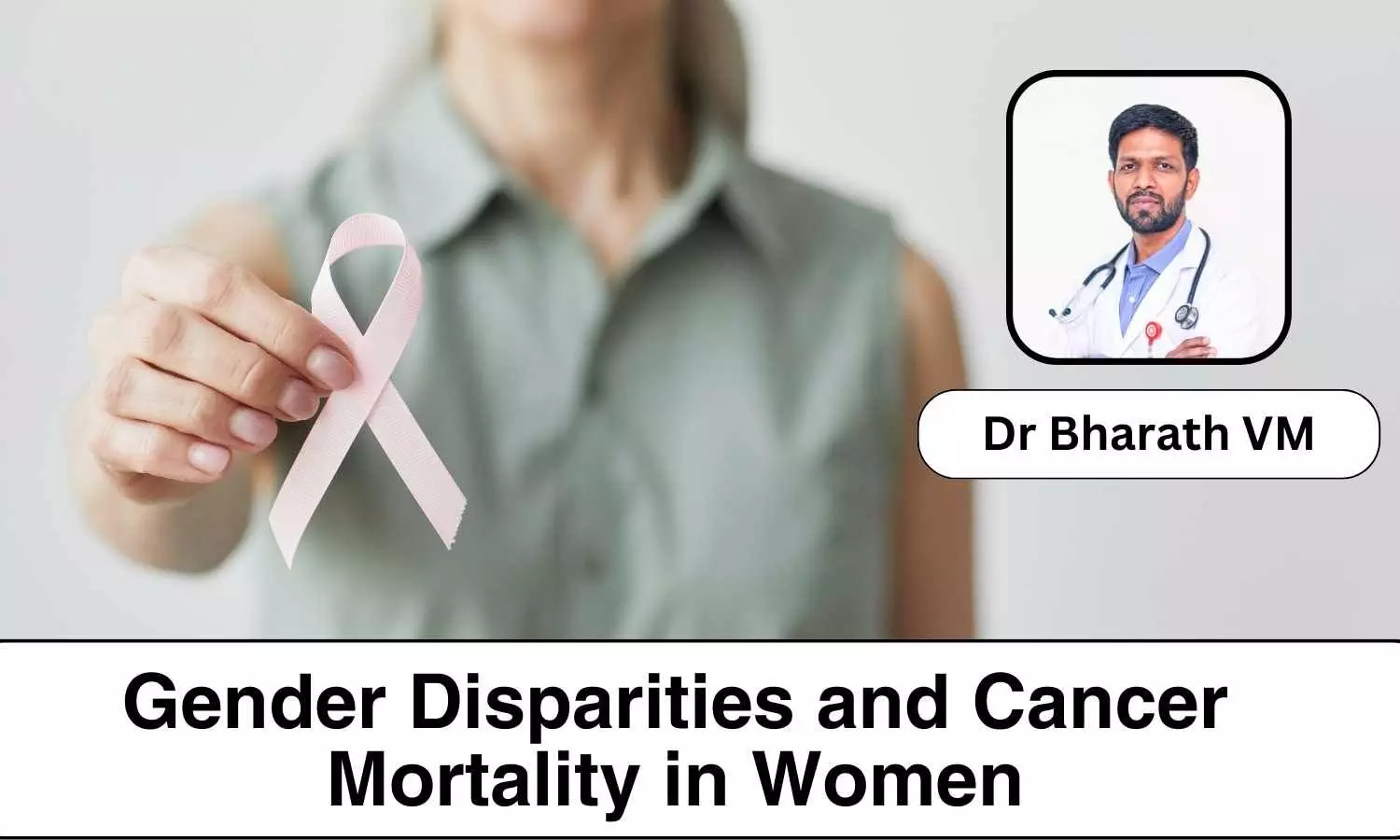Do Gender Disparities Impact Cancer Mortality in Women? – Dr Bharath VM

Gender
inequality persists as an ongoing social issue, manifesting in various aspects
of life. From wage disparities to under recognition in sports and politics,
women frequently encounter barriers hindering their access to resources and
well-being.
Although progress has been made to address these disparities, one
area that has been overlooked is the impact of gender inequality on women’s
health, specifically in the realm of cancer care.
The Lancet report has
presented data on the gender inequality experienced by women and has also
outlined policies to help them attain an equal position on par with men.
Women interact with cancer in
multiple and complex ways:
Cancer, the world’s second-largest killer after heart
disease, is on the rise in India. The study report by ICMR and NCRP indicates
that the number of cancer patients, currently around 14.6 lakh, will reach 16
lakh by next year.
The gender inequality in cancer care extends beyond mere
statistics; it profoundly impacts women in various roles. Women engage with
cancer as healthy individuals participating in prevention and screening, as
survivors living beyond diagnosis, caregivers for loved ones, advocates, healthcare
professionals, researchers, and policymakers.
The Lancet report highlights that
cancer ranks among the top causes of premature mortality for women globally,
yet it is often deprioritized in healthcare agendas.
According to the report,
the elimination of key risk factors or early detection and diagnosis could save
approximately 1.5 million lives. Another 800,000 deaths could be avoided if all
women had access to high-quality cancer care.
Globally, women face financial challenges in coping with
cancer, aggravated by fewer financial resources than men. In the cancer
workforce, women report pervasive gender-based discrimination, including
bullying and sexual harassment.
Shockingly, only 16% of global cancer-related
organizations are led by women. Moreover, the unpaid caregiving work for those
with cancer is predominantly shouldered by women, representing a significant
percentage of national health expenditures in various countries.
A Call to
Action
Acknowledging the magnitude of gender disparities in cancer
care, the Lancet Commission proposes ten policies and a comprehensive working
plan. The core objectives include prioritizing data collection, ensuring
equitable healthcare access, promoting screening and early diagnosis, spreading
awareness among rural women, and advocating for equal opportunities and pay
standards.
The Lancet Commission report challenges prevailing
misconceptions that addressing gender inequality in cancer care is a mere
feminist or politically driven agenda.
Instead, it emphasizes the urgency of
recognizing the undeniable numbers and statistics that reveal a disparity in
the treatment of women facing cancer.
The report serves as a call for
collective responsibility, urging fathers, brothers, and husbands to stand up
for women’s rights and equity in cancer care and healthcare at large.
As society strives for inclusivity and equality, addressing
gender disparities in cancer care is not just a moral imperative but a public
health necessity.
So, a roadmap for systemic change, emphasizing the need for
individual and collective action to bridge the gap in cancer care, is highly
recommendable. It is time to move beyond rhetoric and translate awareness into
tangible policies that ensure women receive the equitable, compassionate care
they deserve in their battle against cancer.



